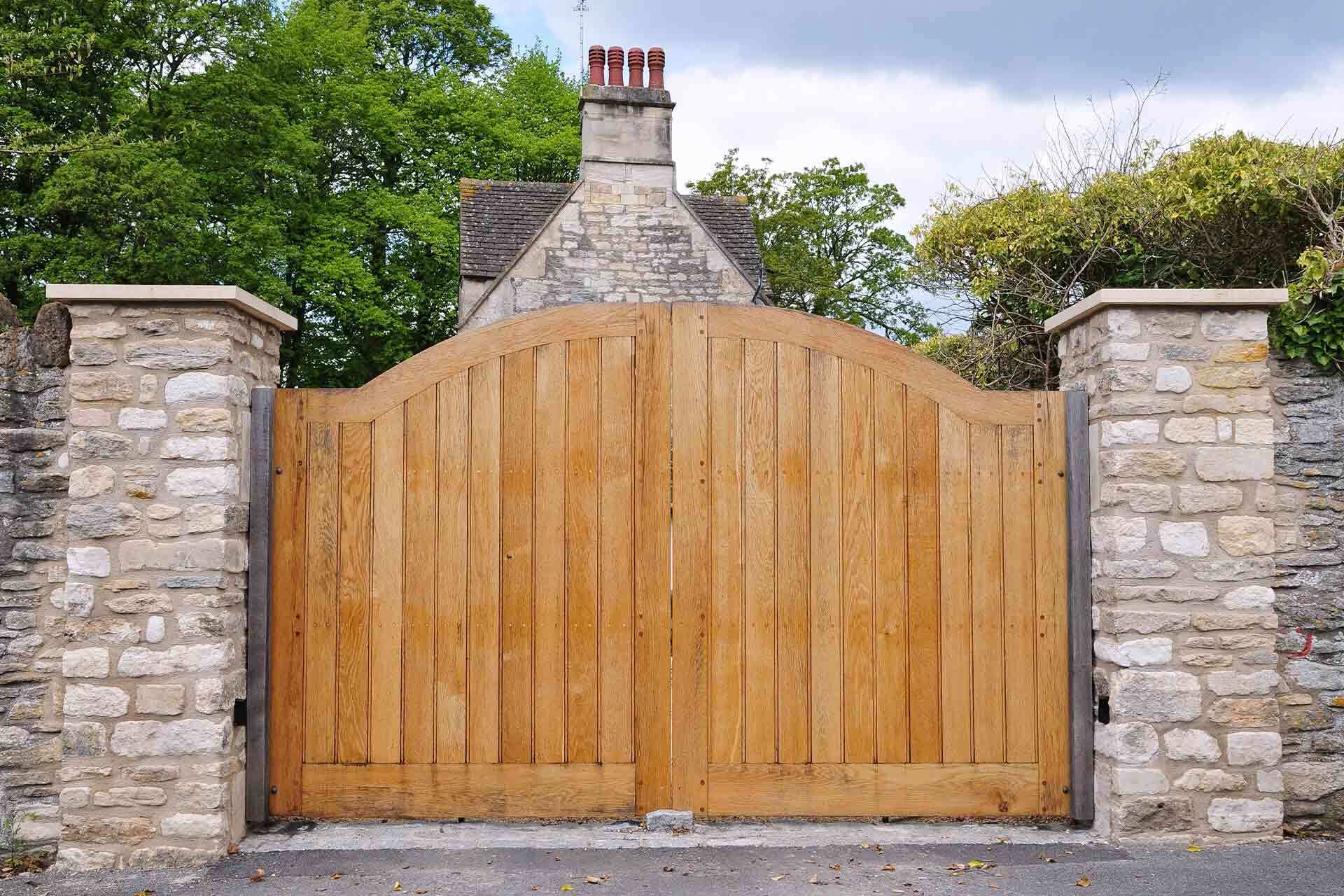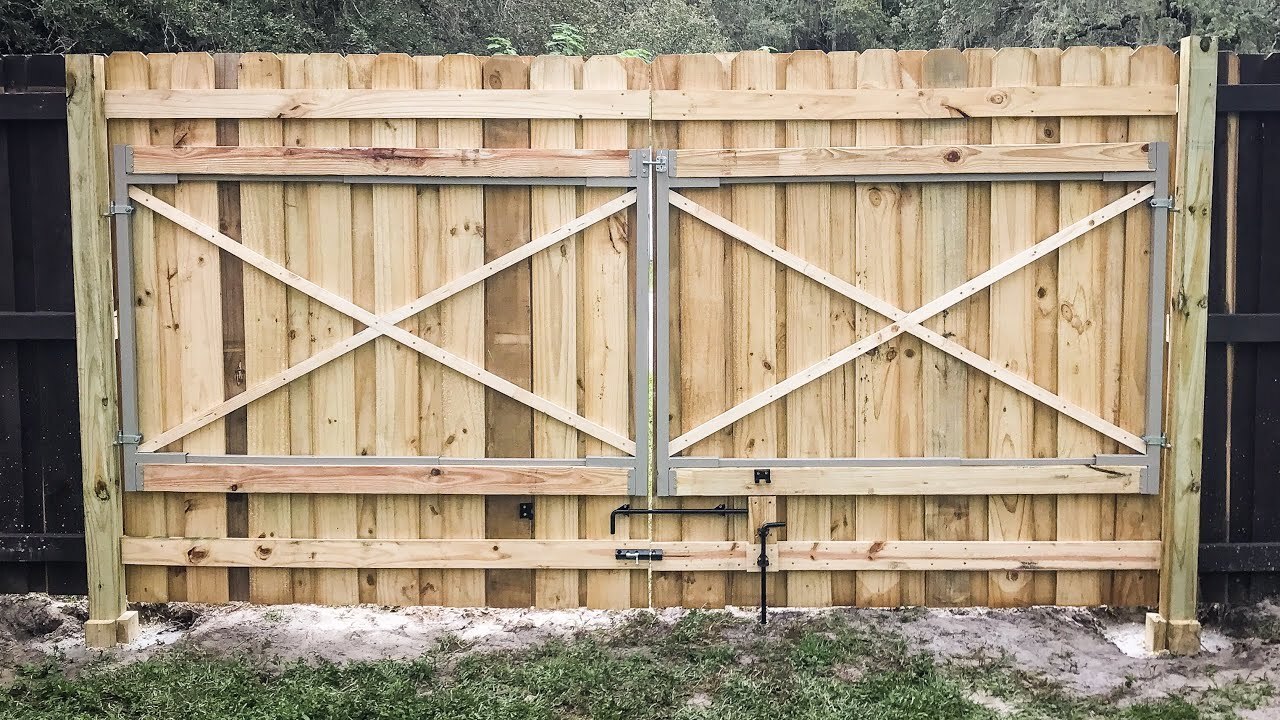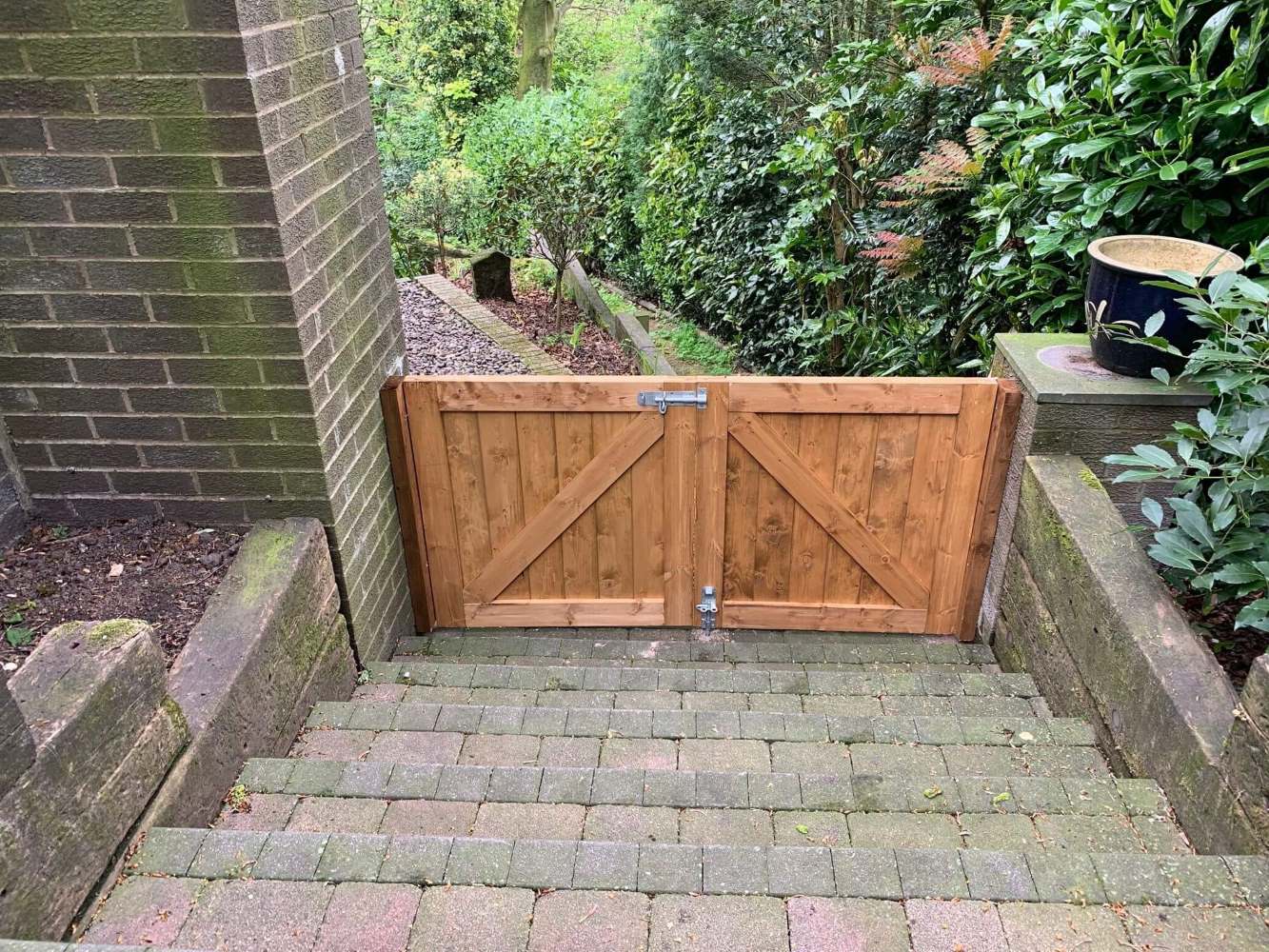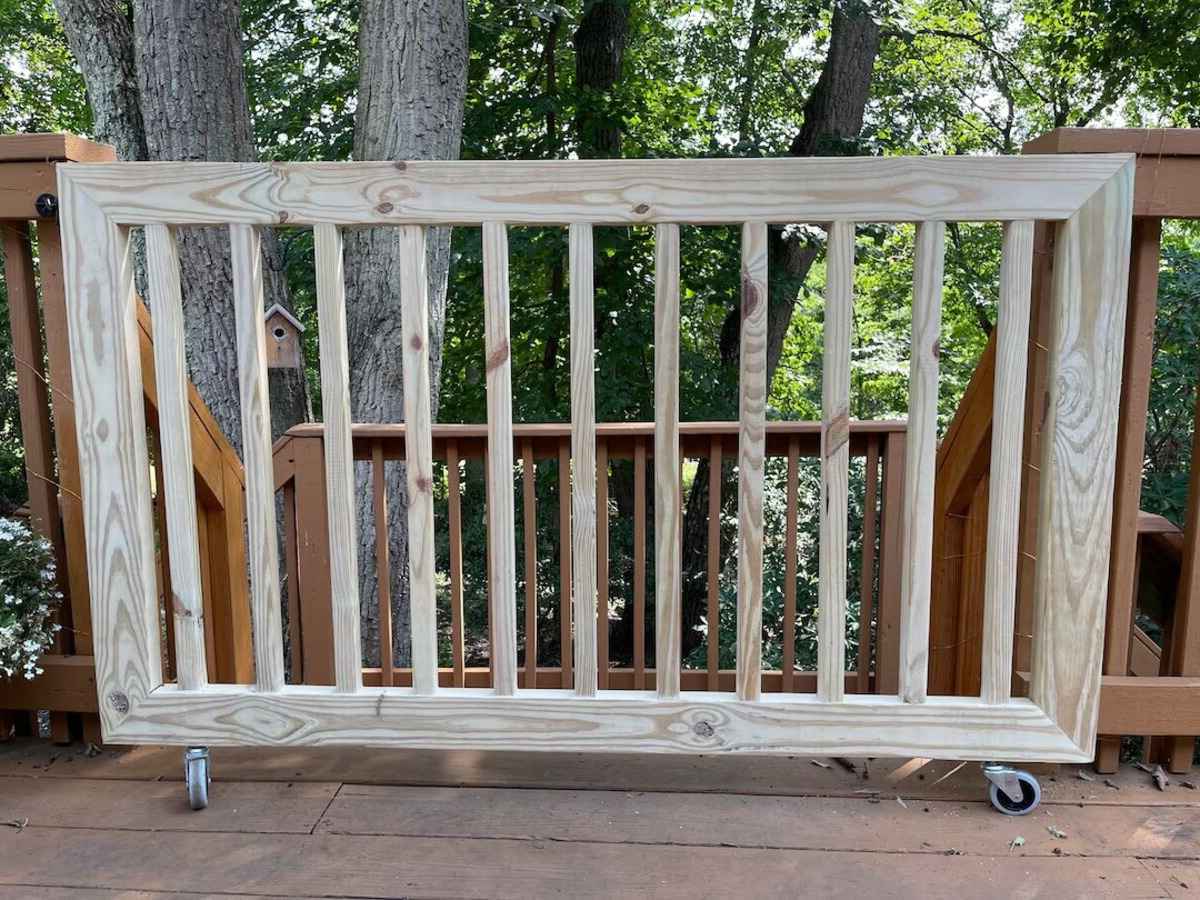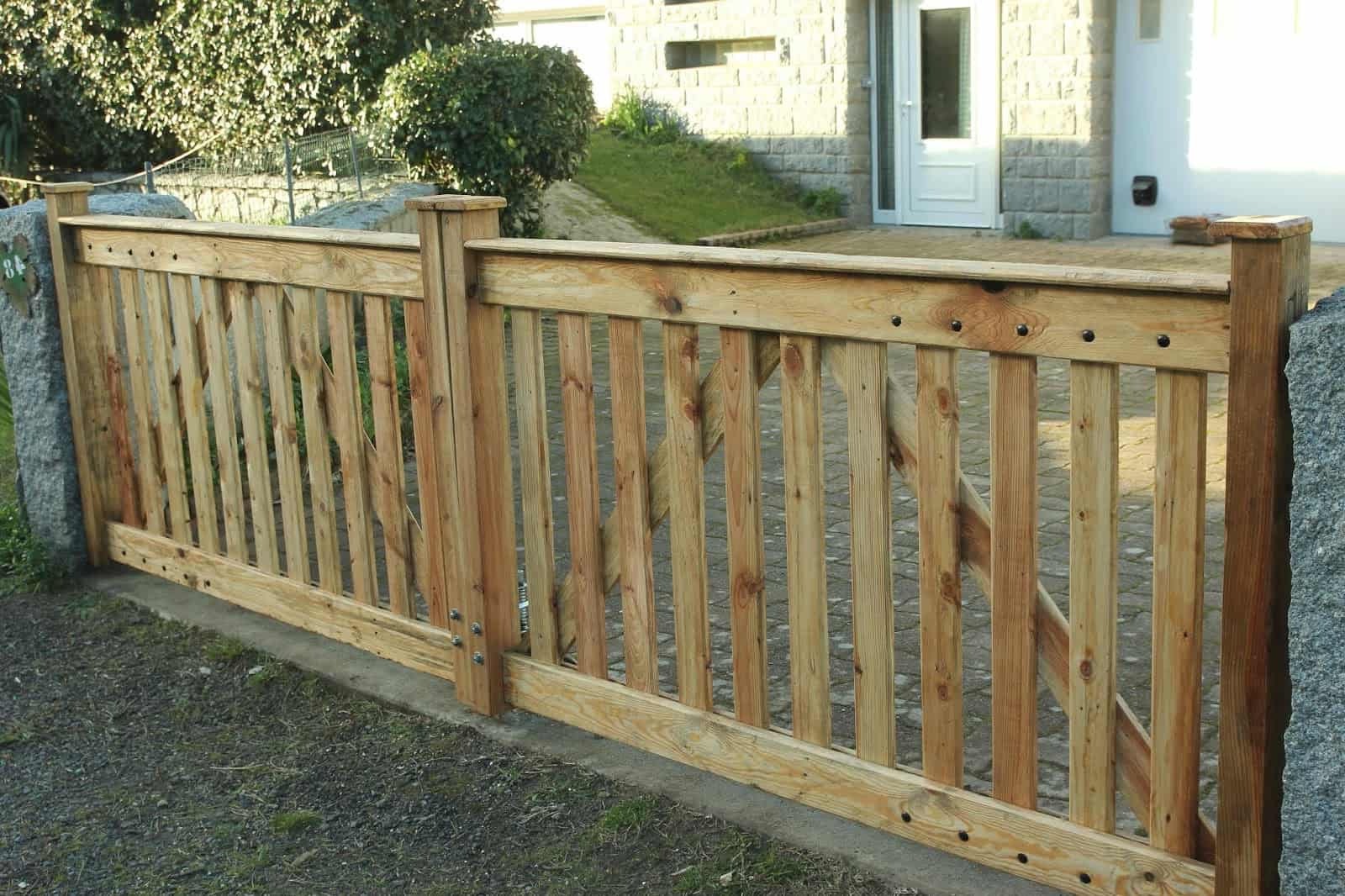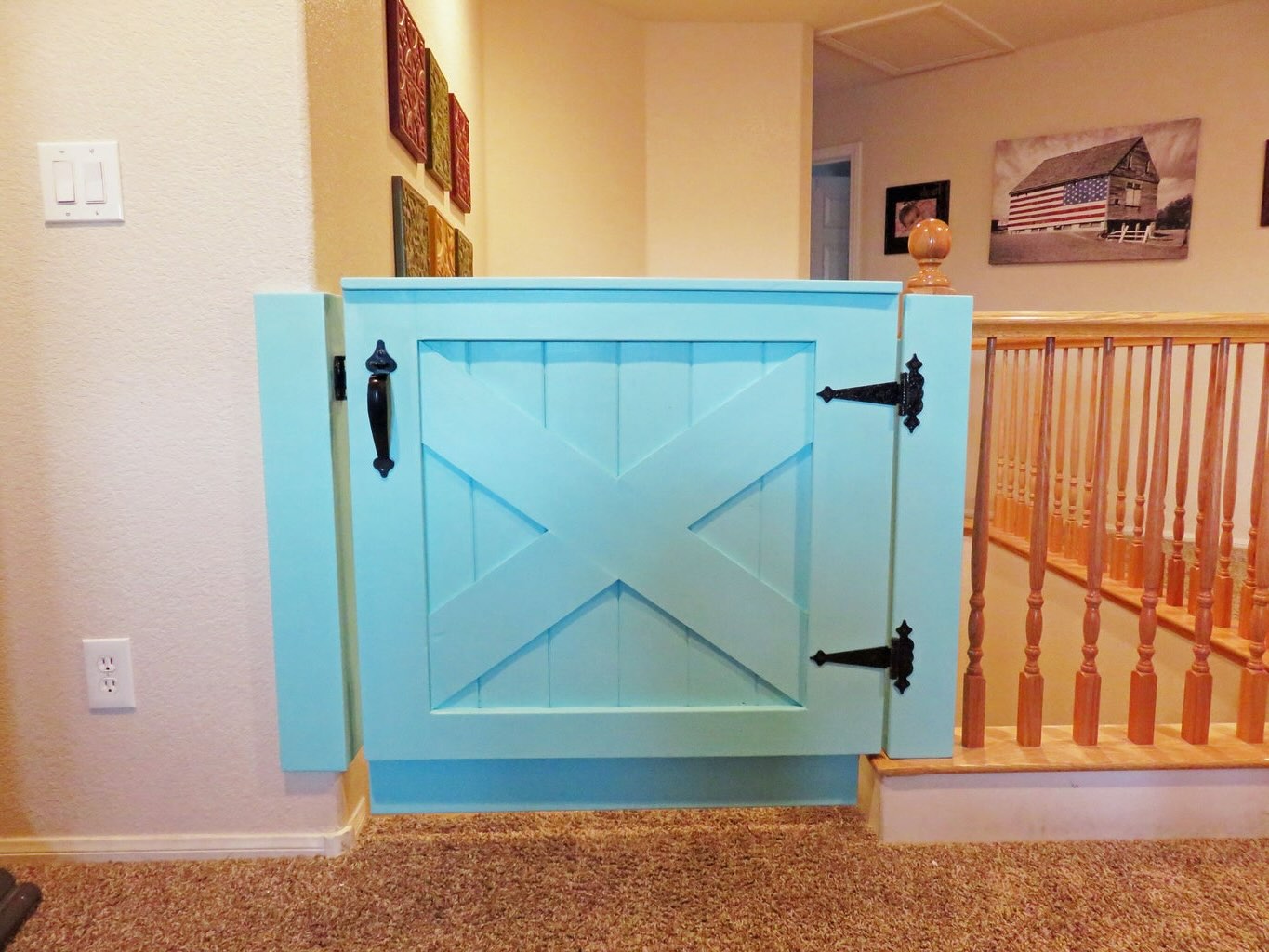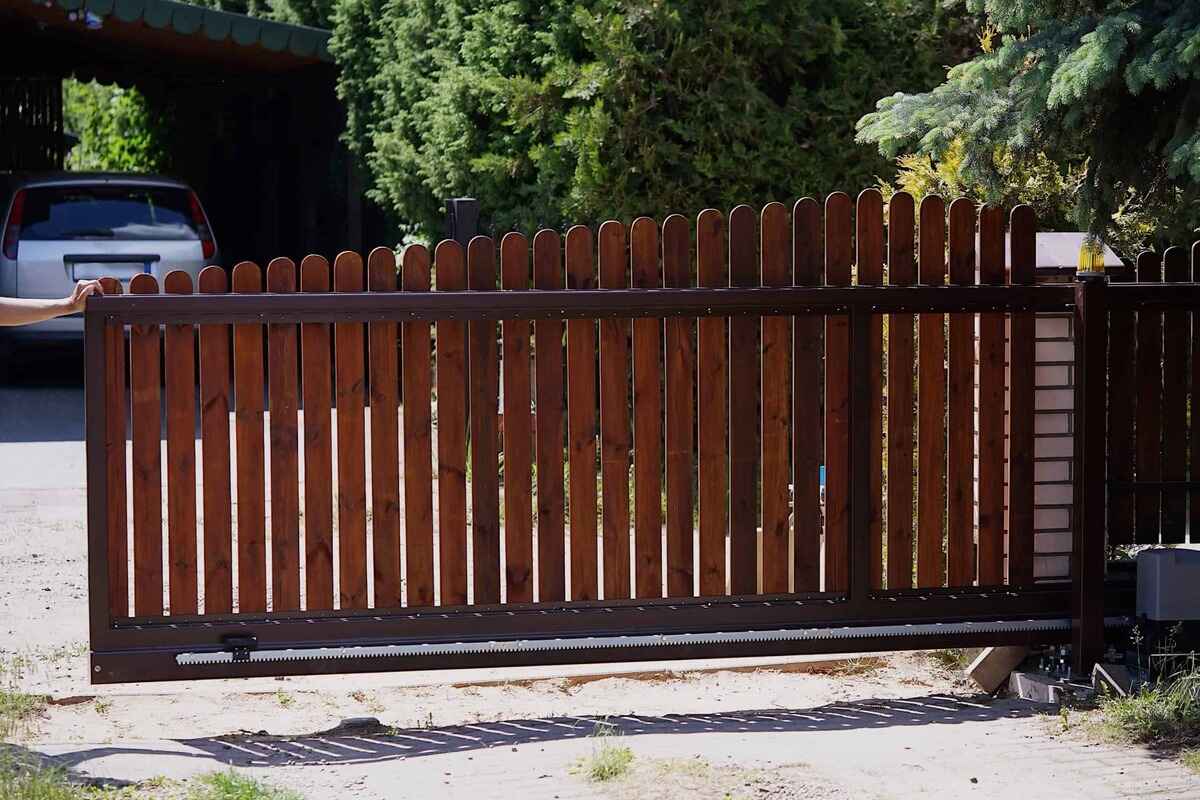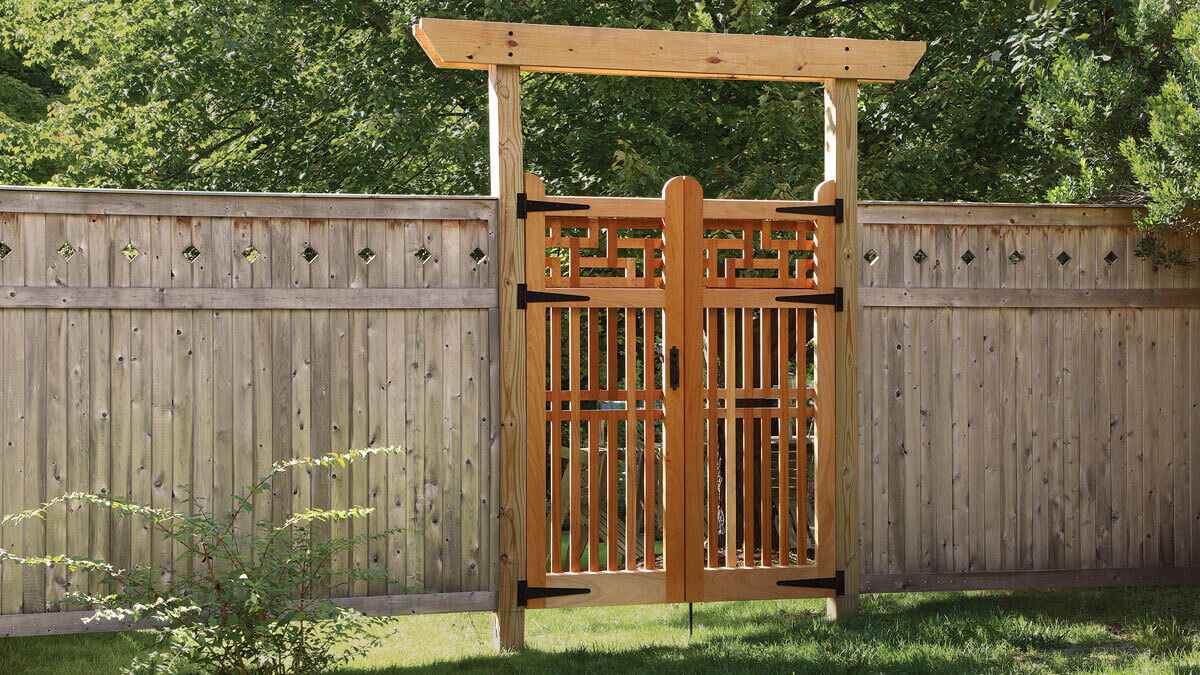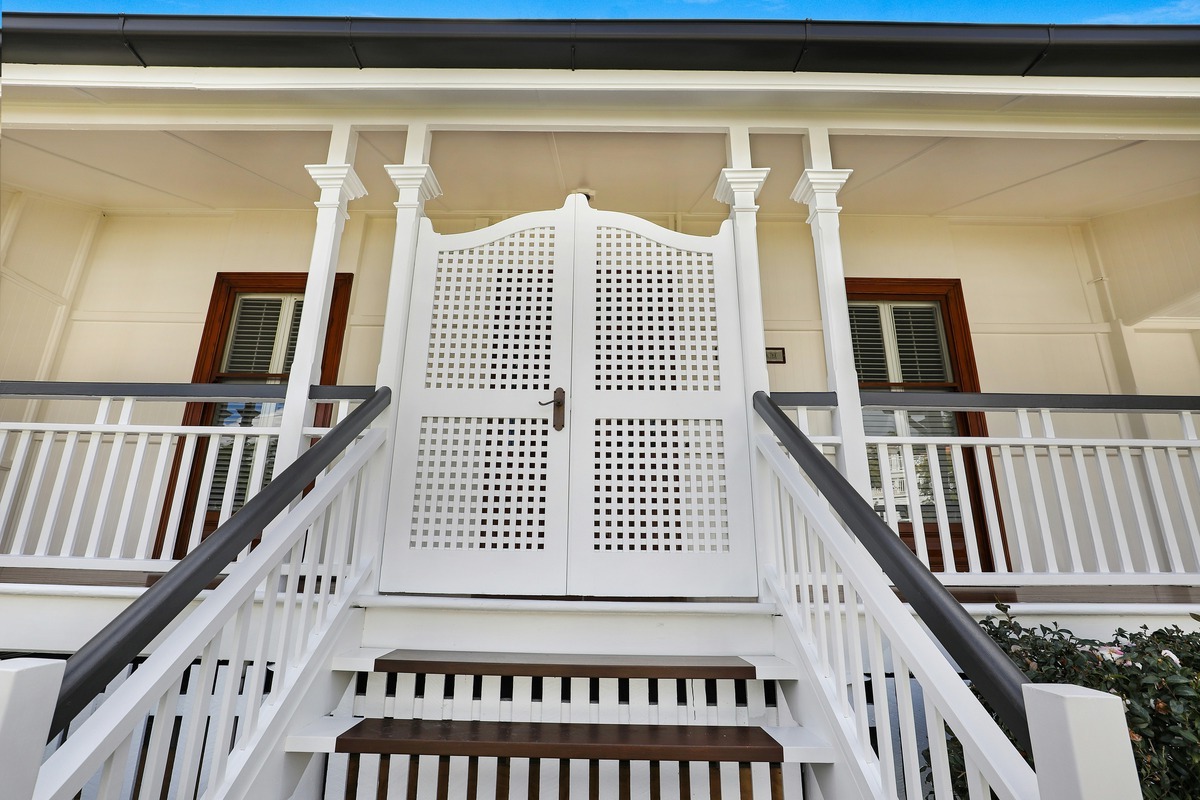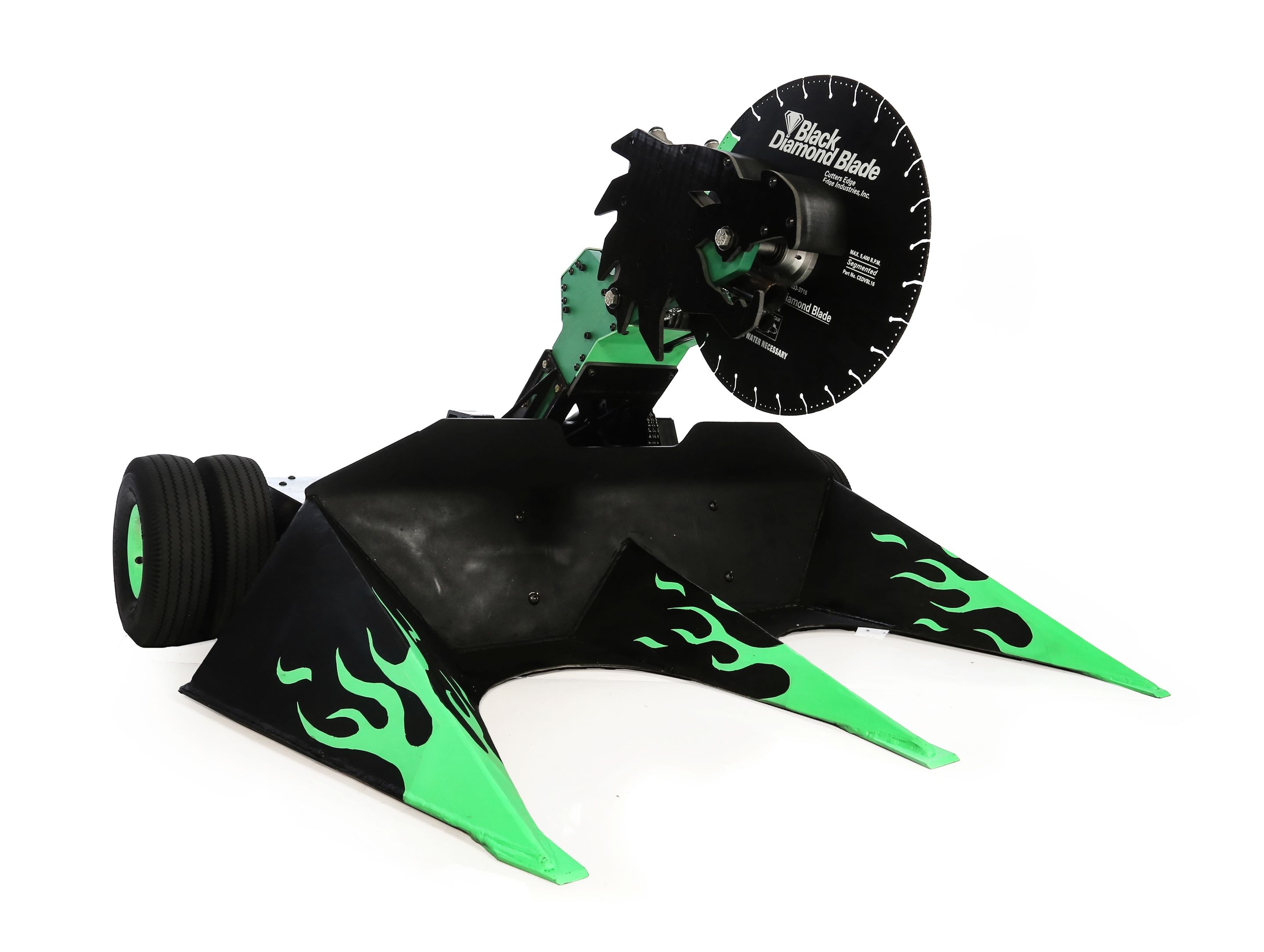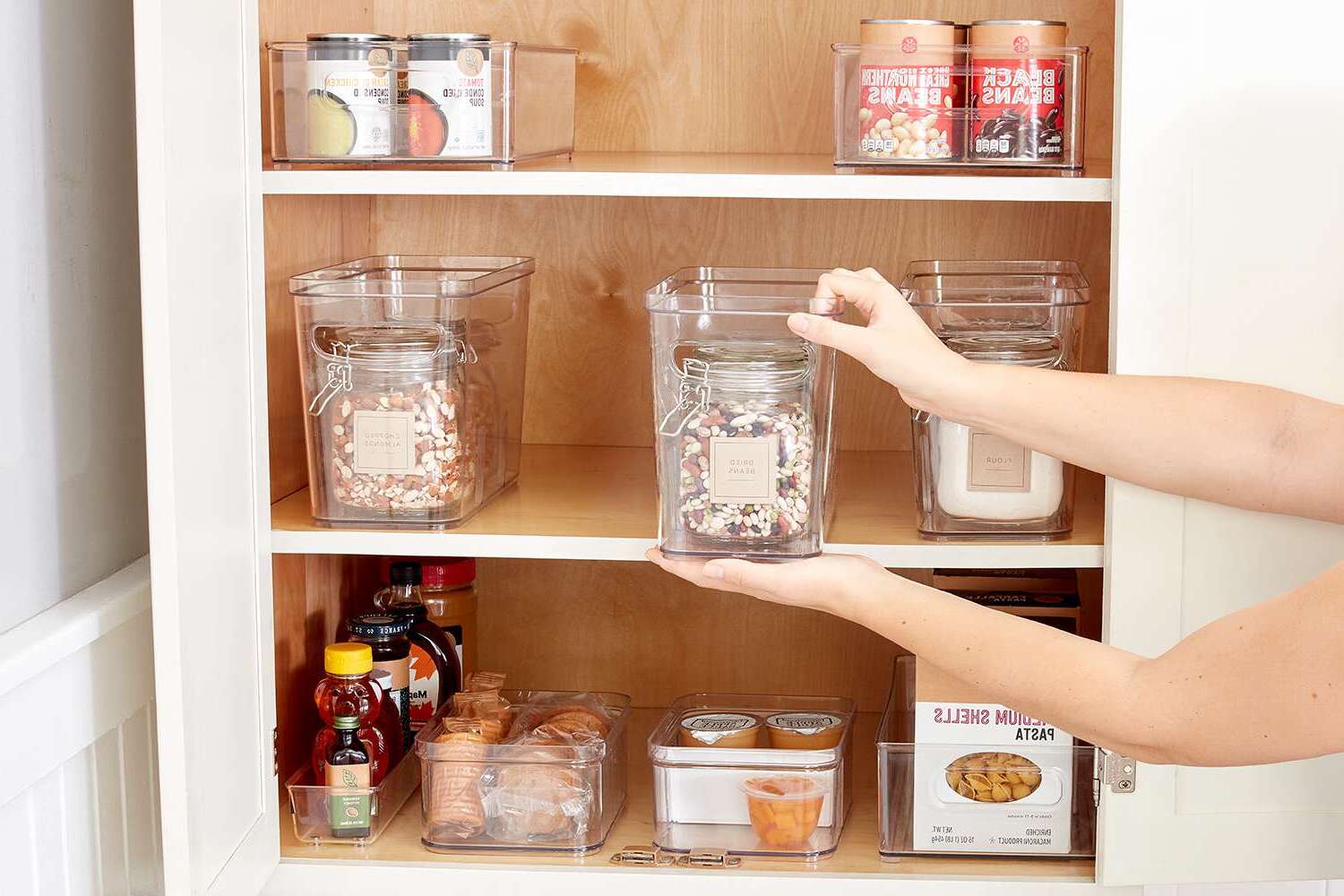Home>Create & Decorate>DIY & Crafts>How To Build A Chain Link Gate
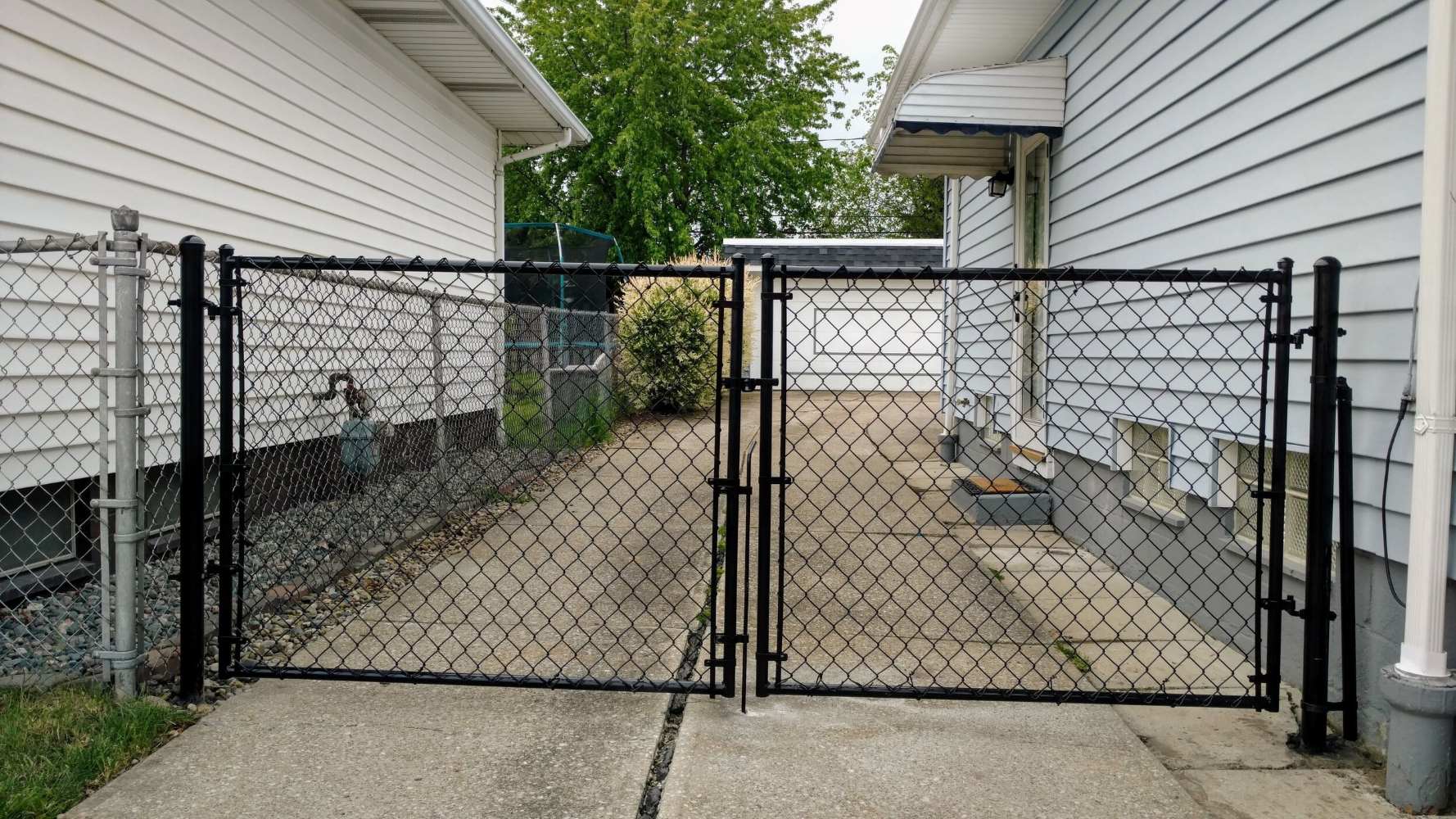

DIY & Crafts
How To Build A Chain Link Gate
Published: May 22, 2024

Content Creator specializing in woodworking and interior transformations. Caegan's guides motivate readers to undertake their own projects, while his custom furniture adds a personal touch.
Learn how to build a chain link gate with this DIY & Crafts guide. Follow step-by-step instructions for a sturdy and secure gate.
(Many of the links in this article redirect to a specific reviewed product. Your purchase of these products through affiliate links helps to generate commission for Twigandthistle.com, at no extra cost. Learn more)
Introduction
So, you've decided to add a chain link gate to your property. Whether it's for security, to keep pets in, or simply to add a touch of style, building a chain link gate can be a rewarding DIY project. In this article, we'll guide you through the step-by-step process of building a sturdy and functional chain link gate for your home. By the end of this guide, you'll have the knowledge and confidence to tackle this project and enhance the functionality and aesthetics of your property. Let's get started!
Read more: How To Build A Gate
Materials Needed
To build a chain link gate, you will need the following materials:
- Chain link fencing: This will form the main body of the gate and provide security and visibility.
- Gate frame: You can purchase a gate frame kit or build your own using galvanized steel tubing.
- Gate hardware: This includes hinges, a latch, and any other necessary hardware for hanging and securing the gate.
- Concrete mix: For setting the gate posts securely in the ground.
- Gate post: These will support the gate and keep it stable. Make sure they are the correct height and thickness for your specific gate design.
- Gravel or stone: This will be used for the gate post footings to provide stability and drainage.
- Tools: You will need basic hand tools such as a shovel, level, tape measure, and wrenches for assembling the gate frame and attaching the hardware.
- Safety equipment: Gloves, safety glasses, and work boots are essential for protecting yourself during the construction process.
Gathering these materials before you begin will ensure a smooth and efficient building process.
Measuring and Planning
Before diving into the construction of your chain link gate, it's crucial to start with accurate measurements and thorough planning. Here's how to go about it:
-
Measure the Opening: Begin by measuring the width of the gate opening. Take precise measurements at the top, middle, and bottom to account for any variations in the ground level.
-
Determine the Gate Height: Decide on the desired height of your gate. Standard chain link gates are typically 4 feet high, but you can adjust this based on your specific needs.
-
Plan the Post Placement: Mark the locations where the gate posts will be installed. Ensure that they are set back from the edge of the gate opening to allow for the width of the gate and the hardware.
-
Consider Ground Clearance: Determine the amount of ground clearance needed for your gate to swing freely without scraping the ground. This will depend on the terrain and any potential obstructions.
-
Account for Hardware: Take into account the space required for the gate hardware, including hinges and the latch. This will influence the overall width of the gate.
-
Sketch the Design: Create a simple sketch or diagram of your gate, incorporating all the measurements and dimensions. This will serve as a visual reference throughout the construction process.
By carefully measuring and planning the specifics of your chain link gate, you'll lay a solid foundation for the subsequent construction stages.
Setting the Posts
Setting the posts is a critical step in ensuring the stability and longevity of your chain link gate. Here's how to set the posts for your gate:
-
Mark the Post Locations: Begin by marking the exact spots where the gate posts will be placed. Use a tape measure and stakes to clearly outline the positions.
-
Dig the Post Holes: Using a post hole digger or an auger, dig holes at the marked locations. The depth of the holes should be approximately one-third of the above-ground height of the posts, with an additional 6 inches for gravel at the bottom.
-
Add Gravel: Pour a layer of gravel or crushed stone into the bottom of each hole. This will help with drainage and prevent the posts from sitting in water, which can lead to rot over time.
-
Insert the Posts: Carefully place the gate posts into the holes, ensuring they are level and plumb. Use a spirit level to check for vertical alignment, and make adjustments as needed.
-
Secure with Concrete: Once the posts are properly positioned, it's time to fill the holes with concrete. Prepare the concrete mix according to the manufacturer's instructions and pour it into the holes around the posts.
-
Check for Alignment: Double-check the alignment and vertical position of the posts before the concrete sets. Make any final adjustments to ensure they are perfectly straight and level.
-
Allow for Curing: Give the concrete ample time to cure and harden. This typically takes at least 24 to 48 hours, depending on the specific concrete mix and environmental conditions.
By following these steps, you'll establish a solid foundation for your chain link gate, ensuring that it remains sturdy and secure for years to come.
Attaching the Frame
Once the gate posts are securely set and the concrete has cured, it's time to attach the gate frame. The frame provides structural support for the chain link mesh and serves as the backbone of the gate. Here's how to proceed with this crucial step:
-
Assemble the Gate Frame: If you're using a gate frame kit, follow the manufacturer's instructions to assemble the frame. This typically involves connecting the frame corners and horizontal bracing using self-tapping screws or bolts. Ensure that the frame is square and true to the dimensions outlined in your initial planning.
-
Position the Frame: With the gate frame assembled, position it between the gate posts at the desired height. Use wooden blocks or shims to support the frame and maintain the correct clearance from the ground. It's essential to have a helper for this step to hold the frame in place while you secure it.
-
Attach the Frame to the Posts: Using U-bolts or post caps, secure the gate frame to the gate posts. Place the U-bolts or post caps around the gate post and through the frame, then tighten them using a wrench. Ensure that the frame is level and plumb before fully tightening the hardware.
-
Check for Squareness: Verify that the gate frame is square by measuring the diagonals. The diagonals should be equal in length, indicating that the frame is perfectly square. Make any necessary adjustments to ensure the frame is properly aligned.
-
Strengthen the Frame: For added stability, consider installing diagonal bracing within the gate frame. This can be achieved by attaching diagonal braces from the top corners of the gate frame to the bottom of the hinge post. Diagonal bracing helps prevent the gate from sagging over time.
-
Double-Check the Alignment: Before proceeding to the next steps, take a final look at the gate frame's alignment and make any adjustments as needed. It's crucial to ensure that the frame is securely attached and perfectly positioned before moving on to the installation of the chain link mesh.
By following these steps, you'll effectively attach the gate frame, laying the groundwork for the subsequent installation of the chain link mesh. A well-secured and properly aligned frame is essential for the overall stability and functionality of the chain link gate.
Read more: How To Build A Fence Gate
Installing the Chain Link Mesh
Now that the gate frame is securely in place, it's time to install the chain link mesh. This step will provide the security and visibility that are characteristic of chain link gates. Here's how to proceed with the installation of the chain link mesh:
-
Measure the Mesh: Begin by measuring the width of the gate opening to determine the length of chain link mesh needed. It's essential to leave a slight overlap on each end to ensure complete coverage.
-
Unroll the Mesh: Lay the chain link mesh flat on the ground outside the gate opening. Unroll it carefully, ensuring that the bottom edge of the mesh is aligned with the bottom of the gate frame.
-
Secure the Mesh to the Frame: Using tension bands and bolts, secure the chain link mesh to the gate frame. Start at one end of the gate and work your way across, attaching the mesh to the top rail, bottom tension wire, and line posts using the appropriate hardware.
-
Maintain Tension: As you progress, ensure that the mesh remains taut and free of slack. Tension bands should be tightened securely to maintain the desired level of tension throughout the installation.
-
Trim Excess Mesh: Once the mesh is fully attached to the gate frame, trim any excess length using fence pliers. Be sure to leave a sufficient amount of mesh to overlap the end post, allowing for a secure connection.
-
Secure the End of the Mesh: Use a tension bar and tension bands to secure the end of the chain link mesh to the terminal post. This ensures that the mesh is firmly anchored and prevents it from unraveling.
-
Check for Uniformity: After the mesh is installed, step back and inspect the gate to ensure that the mesh is uniformly aligned and free of irregularities. Make any necessary adjustments to maintain a consistent and professional appearance.
By following these steps, you'll successfully install the chain link mesh, transforming the gate frame into a fully functional and secure barrier. The chain link mesh provides the finishing touch to your gate, combining practicality with durability to meet your specific needs.
Hanging the Gate
Hanging the gate is a pivotal step that determines the functionality and ease of use of your chain link gate. Proper installation ensures smooth operation and long-term reliability. Here's a detailed guide on how to hang the gate:
-
Attach the Hinges: Begin by attaching the hinges to the gate frame. Position the hinges at the predetermined locations on the gate frame, ensuring that they are evenly spaced and aligned. Use self-tapping screws or bolts to secure the hinges firmly to the frame. It's crucial to follow the manufacturer's guidelines for hinge placement and installation to ensure optimal performance.
-
Prepare the Gate Opening: With the hinges in place, position the gate within the gate opening. Have a helper assist you in holding the gate steady while you align it with the hinges. Use shims or wooden blocks to maintain the desired clearance between the gate and the ground. The gate should swing freely without scraping or dragging.
-
Secure the Gate to the Hinges: Once the gate is properly positioned, attach it to the hinges using the provided hardware. Ensure that the hinges are securely fastened to the gate frame and that the gate swings smoothly without any resistance. Test the gate's movement to verify that it opens and closes as intended.
-
Check for Alignment: Verify that the gate is aligned with the gate opening and that it swings evenly without binding. Use a level to confirm that the gate is plumb and adjust the hinges if necessary to achieve proper alignment. A well-aligned gate ensures smooth operation and prevents premature wear on the hinges and latch.
-
Install the Gate Latch: With the gate securely hung, install the gate latch at the desired height on the gate frame. The latch should align with the corresponding component on the gate post to ensure a secure closure. Follow the manufacturer's instructions for latch installation, and test the latch to confirm that it engages and secures the gate effectively.
-
Test the Gate Operation: Once the gate and latch are installed, test the gate's operation by opening and closing it multiple times. Verify that the gate swings freely, latches securely, and remains stable when closed. Make any necessary adjustments to the hinges or latch to achieve optimal performance.
By following these steps, you'll successfully hang the gate, completing the construction of your chain link gate. A properly hung gate enhances the security and accessibility of your property, providing a functional and aesthetically pleasing entryway.
Adding the Latch and Hardware
After the gate is securely hung, the next crucial step is to add the latch and hardware, which are essential for securing the gate and ensuring controlled access. Here's a detailed guide on how to add the latch and hardware to your chain link gate:
-
Select the Appropriate Latch: Choose a latch that suits your specific needs, whether it's a simple gravity latch for residential use or a more robust and secure latch for commercial applications. Consider factors such as gate size, intended use, and desired level of security when selecting the latch.
-
Position the Latch: Determine the ideal height for the latch on the gate frame, taking into account convenience and accessibility. Mark the location where the latch will be installed, ensuring that it aligns with the corresponding component on the gate post for a secure closure.
-
Install the Latch Mechanism: Depending on the type of latch, follow the manufacturer's instructions to install the latch mechanism securely on the gate frame. This may involve drilling pilot holes and using screws or bolts to attach the latch. Ensure that the latch operates smoothly and securely engages with the gate post component.
-
Test the Latch: Once the latch is installed, test its functionality by opening and closing the gate multiple times. Verify that the latch securely holds the gate in the closed position and that it can be easily released when needed. Make any adjustments to the latch mechanism to achieve optimal performance.
-
Add Additional Hardware: In addition to the latch, consider adding any necessary hardware such as gate stops or bumpers to prevent the gate from swinging too far in either direction. Gate stops can help protect the gate, the latch, and the surrounding fencing from damage caused by excessive swinging.
-
Inspect for Smooth Operation: After adding the latch and any additional hardware, inspect the gate for smooth operation. Open and close the gate to ensure that the latch engages securely, the gate stops function as intended, and the overall operation is smooth and controlled.
By following these steps, you'll effectively add the latch and hardware to your chain link gate, completing the essential components for secure and controlled access. A properly installed latch and hardware ensure that your gate serves its intended purpose, providing security and convenience for your property.
Conclusion
Congratulations! You have successfully completed the construction of a sturdy and functional chain link gate for your property. By following the step-by-step guide outlined in this article, you have gained the knowledge and skills necessary to tackle this DIY project with confidence. Your new chain link gate not only enhances the security and accessibility of your property but also adds a touch of style and practicality.
Remember, proper planning, precise measurements, and attention to detail are key elements in the successful construction of a chain link gate. From setting the posts to hanging the gate and adding the latch, each step contributes to the overall functionality and durability of the gate.
As you admire your completed project, take pride in the fact that you have acquired valuable DIY and home improvement skills. Whether it's for keeping pets secure, defining property boundaries, or adding a decorative element to your landscape, your newly constructed chain link gate is a testament to your craftsmanship and determination.
Now that your chain link gate stands proudly on your property, take a moment to appreciate the sense of accomplishment that comes with completing a hands-on project. Your new gate not only serves a practical purpose but also reflects your ability to take on and conquer DIY challenges.
As you enjoy the benefits of your newly installed chain link gate, take note of the skills you have acquired throughout the process. Whether it's measuring and planning, setting posts, attaching the frame, installing the chain link mesh, hanging the gate, or adding the latch and hardware, each step has contributed to your growth as a DIY enthusiast.
With your newfound expertise in building a chain link gate, you are well-equipped to take on future DIY projects with confidence and enthusiasm. Whether it's enhancing your property, improving functionality, or simply indulging in the satisfaction of hands-on construction, your journey in the world of DIY and home improvement continues to unfold.

